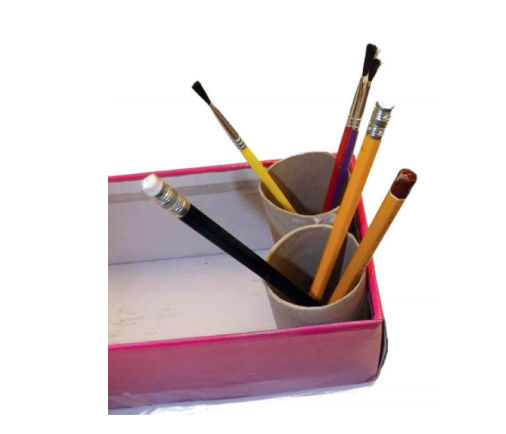



Task 5: Upcycling – Tool Holders
If we use brushes, scissors and other tools for our crafting that are lying about on the table and cannot be put away anywhere, you can create simple tool holders with your pupils for: coloured pencils, brushes, scissors and more.
cardboard boxes, rolls of toilet paper or kitchen towels, pieces of cardboard, coloured paper and other materials for decoration.
We glue the rolls of toilet paper or kitchen towels cut in half into the cardboard box. We can decorate them with paints or coloured paper before putting them in the box.
In the photo we see the base of the holder. We place the rolls into the box according to its size. If the box does not correspond precisely to the size of the rolls, we insert the cardboard into the gaps, creating divisions. We use paper and glue on the product so that we can easily sort it for recycling after its lifetime period is finished.
